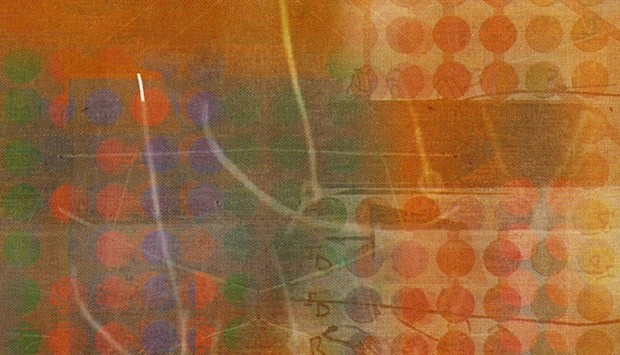Home » Jazz Articles » Future Jazz » Transforming Jazz From Cultural Staple to Cultural Imperative
Transforming Jazz From Cultural Staple to Cultural Imperative

Jazz is a particularly difficult subject, given to voracious crosscurrents and turbulent discussions. Ask ten people, get eleven opinions. This year we have witnessed the heated questioning of whether the word jazz is even appropriate. Is jazz a force of nature or the result of nurture? Does jazz have an invisible footprint or is jazz stuck in the mud? Is jazz inclusive or is it exclusive, leaving it isolated and barricaded in its own walled garden?
But it is just this passion and compassion that gets our blood flowing, with these seemingly bipolar concepts that reaffirm jazz's importance in our lives, our communities and as a cultural anchor.
Let's take this up one notch from the tangled debate and look at jazz as a renewable resource, boundless in its imagination, endless in its permutations. Let's celebrate it as the national treasure as decreed by Congress. Let's see where we can agree to agree and use our collective strength to power our future.
So where do we begin? The ecosystem as a metaphor is popular way to contextualize how elements disparate or not can be ultimately connected to a larger universe. Jazz is no exception, and in fact is well-suited for this analytical perspective particularly if we look at this notion that the whole is greater than the sum of the parts.
Yet the notion of jazz as its own ecosystem oversimplifies its institutional position and easily leads to isolationist tendencies. What does this mean?
Jazz simultaneously sits across three planes from which it derives its cultural standing:
- Within the jazz community;
- Within the music and performing arts industry at large;
- Within the broader cultural community.
Let's look at each self-sustaining community:
Within the Jazz Community
The creeping effect of paradigm blindness is a well-known organizational condition. Tom Silverman, a notable music insider and co-founder of the New Music Seminar, presented this idea that it is present within the music industry during the Jazz Connect's pecha kucha at the Association of Performing Arts Presenters conference (APAP) in New York City. All industries, all companies, all groups with common interests reach a point where growth decreases and stasis rears its head. Thinking goes from "out the box" to "in the box."The irony, of course, is jazz was born as an "out of box" art form. It was the rejection of music norms which gave birth to our new language and form of expression. Given our long multi-generational history, the many defining moments create stake posts for creative and critical thinking. All good and all-important until we wage the culture wars on which periods are more important than others and which artists hold absolute definition of the art form. Within the jazz community itself, the most important paradigm of thinking is our shared love of the music, our national pride in its origin and its celebration as a major component in modern life. We are all part of the family of jazz, warts and all.
To unify, harness and thrive we need to create an inclusive group whose infrastructure is open to all and who has an advocacy voice that speaks for all generations. We need to support the present, honor the past and most importantly champion the future. Regeneration is fundamental to keeping jazz relevant for generations to come. To fight obsolescence our paradigm needs to be the paradigm of reinvention.
Within the Music Industry and the Performing Arts Industry At Large
These are two distinctive points of expansion. The first deals with the business of music and the second looks to neighboring art forms as an outreach to stretch our audience development. Jazz and money seem to have an uneasy relationship. Somehow the hard chase of money seems in bad taste and perhaps a compromise of one's integrity. Logic dictates that hard work should be rewarded. Simplicity, in these times, is a recipe for disaster.Discovery of music has become increasingly complex as technology, from both the hardware and software vantage point, challenges known patterns of usage. It is constantly being rewritten and repositioned to achieve a competitive advantage. The pace of change is ferocious. To keep up, as the marketplace seeks to define a new norm, musicians have to rethink the parameters of their job. It has been suggested that artists might be best to view themselves as a brand, complete with all the trimmings of a new product introduction and maintenance strategies for continued viability and direct market activity.
An excellent study by Future of Music Coalition on "Artist Revenue Streams" showed more than half of musicians surveyed juggled three roles and a quarter of the study's subjects had four or more. The business of music is a critical knowledge base that is constantly being updated and redefined. It bears increasing weight for professional survival. But jazz has a paucity of resources to navigate these increasing technical waters. It is here we need to look to other genres that have dove deeply into these new opportunities to fully understand new prospects for emerging revenue streams.
Within the Broader Cultural Community
The explosion of new media has created a wholly new beast. Two basic tenants have turned the cultural marketplace upside down, both creating opportunities and creating a vastly congested emporium of choice. First, access to market is within everyone's reach in the cyber world. The great news is no longer does an artist or cultural entity need institutional resources to reach an audience. Second, barrier of entry, a traditional market stumbling block for new product introductions or in our case new music, has been reduced. As technical development and production of music is both available and affordable, the great promise of the Internet is that everyone lives on Main Street.The Internet's fundamental value of meritocracy, or the ability for the cream to rise to the top, is its operational mantra. Match that against the reality of the sheer volume of artist offerings, user generated content and a host of other content clawing its way for attention; the end user quickly becomes overwhelmed with too many options. The very system that gave hope by giving equally, has now taken equally as well, subsumed by its own success. Memorialized by Barry Schwartz's "Paradox of Choice," the American psychologist argued more is often less. The volume of choice chokes the very notion that the Internet is the great equalizer, as it gags on its own invention.
Freedom of choice has been compromised by a cacophony of choice. How does jazz fight back? Not easily. The battleground is not within the music community but within the larger cultural arena. It's not a genre battle but a fight for greater cultural relevance. This is where jazz advocacy becomes a key weapon. Does jazz have a voice? Does it have a group beating its drum? There needs to be a collective voice, as a single voice is muted by the stampede of other voices.
We are beginning to see very positive signs of meeting some of these challenges head on. APAP has generously renewed the Jazz Connect confab for 2013. In 2012, the JazzConnect portion of the convention presented by JazzTimes, in association with the Jazz Forward Coalition, drew over 400 people and dealt with topics from "Do It Yourself (DIY)" empowerment to broad advocacy and infrastructure issues. On the national and international front, Jazz Appreciation Month (JAM), Jazz Day and International Jazz Day are initiatives that have the active organizational support of the Smithsonian Institution, US Conference of Mayors, All About Jazz, Jazz Forward Coalition, Jazz Journalists Association, UNESCO and a host of others. Jazz Education Network (JEN) is ever growing in size, importance and as a central activation point for educators around the country.
If we look at jazz from the three vantage points, as stated above, it is ultimately the interaction of three circles within circles and radiating from the core jazz community, extending to the music and performing arts and finally blending in the larger cultural matrix. Collectively this is when our striking force comes into full strength. We are an ecosystem of codependents and need an ecosystem strategy to maximize our competitive edge. To say jazz is a musical art form sells it short. Jazz is a philosophy, a life form, a spiritual healer, a social lubricant, an intellectual stronghold, a unifier and a divider. Jazz is also a major workforce and a driver in our cultural economy. It has a multiplier effect across America, enriching many other businesses, small and large, which benefit from our concerts, music sales, teaching and good will. Think of it... attending a simple performance can employ a babysitter, the purchase of gas, parking, perhaps dinner and a few drinks, etc., spreading money throughout the community.
Within the world standing, jazz's greatest gift is also its greatest curse; it is ubiquitous, transparent in plain sight. We need to widen our lens to provide full vision for the entire world to see. Yes, jazz sits comfortably as a cultural staple but comfort dulls our strife. We need to crank up jazz's operating temperature from a cool pulse to a fiery white heat. Whether working with small local art organizers or national groups such as those mentioned here, or charging forward as a one-person army, everyone's effort is equally important and equally needed. Our goal needs to actively transform jazz from a cultural staple to a cultural imperative. A goal only achieved with everyone mobilized and heading in the same direction.
< Previous
More Than Imaginable
Next >
Double Portion
Comments
Tags
For the Love of Jazz
 All About Jazz has been a pillar of jazz since 1995, championing it as an art form and, more importantly, supporting the musicians who create it. Our enduring commitment has made "AAJ" one of the most culturally important websites of its kind, read by hundreds of thousands of fans, musicians and industry figures every month.
All About Jazz has been a pillar of jazz since 1995, championing it as an art form and, more importantly, supporting the musicians who create it. Our enduring commitment has made "AAJ" one of the most culturally important websites of its kind, read by hundreds of thousands of fans, musicians and industry figures every month.




















